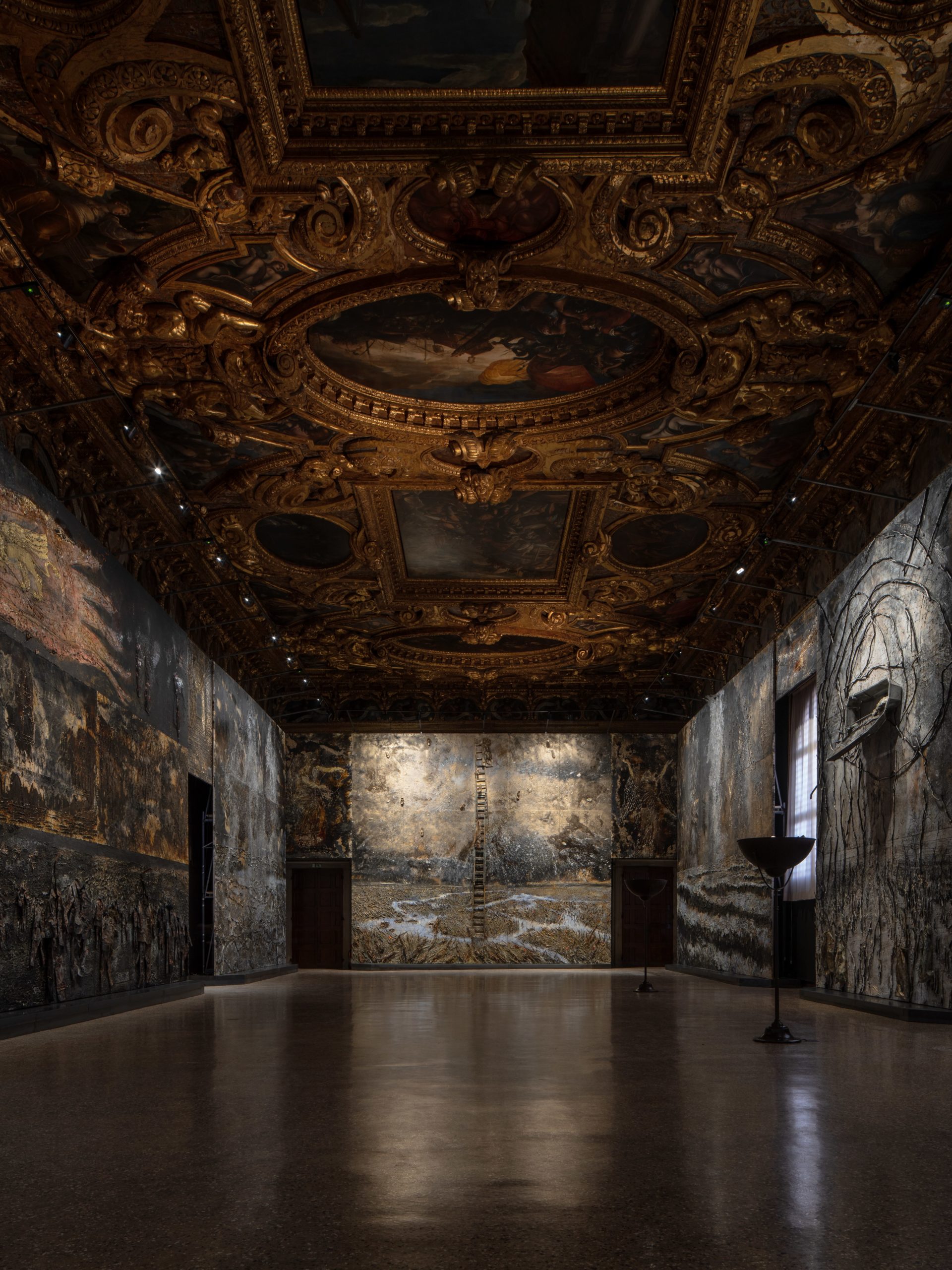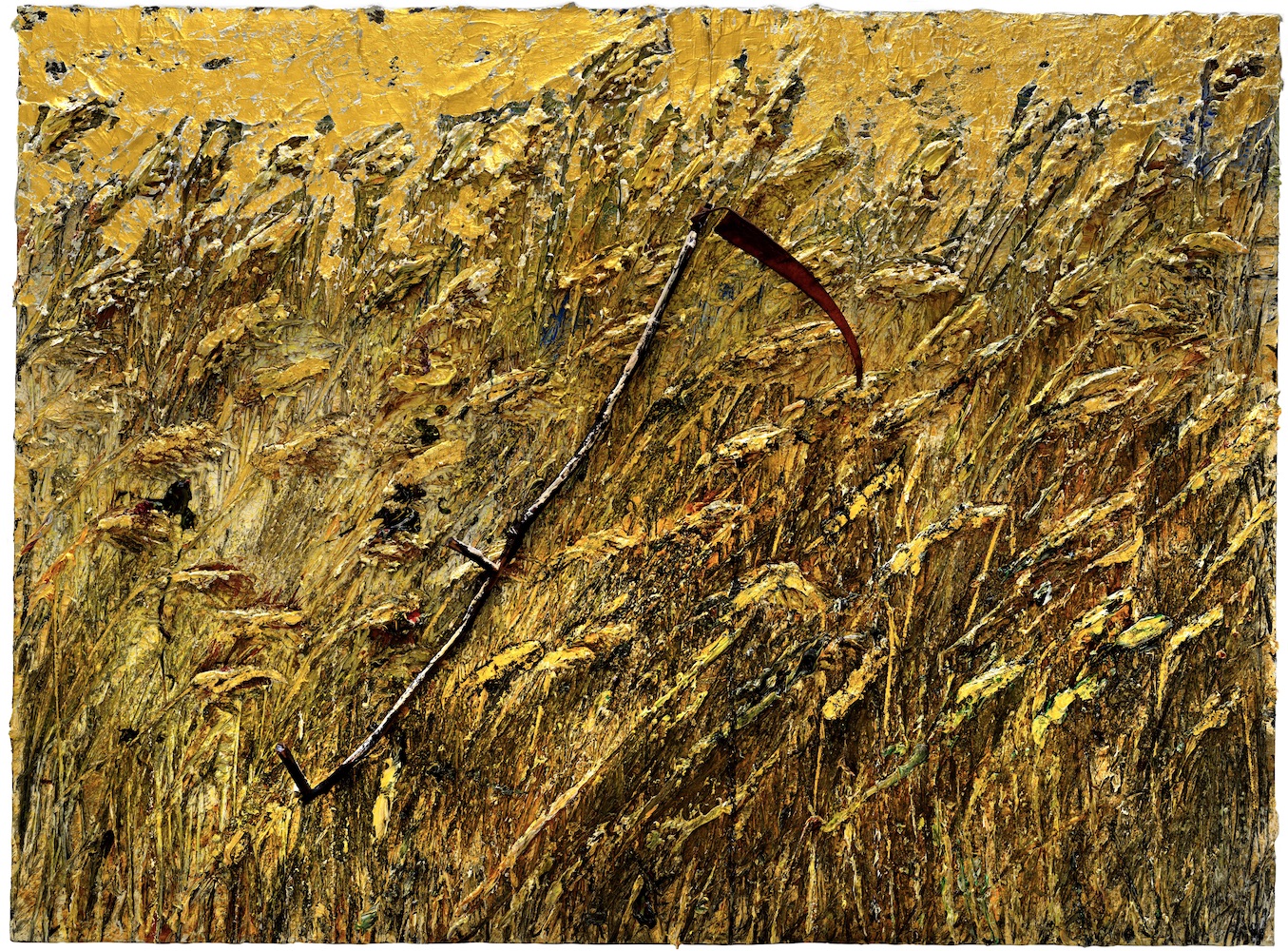Coinciding with this year’s 59th International Art Exhibition at the Biennale di Venezia, the Fondazione Musei Civici di Venezia invited Anselm Kiefer to imagine an exhibition responding to the historic Palazzo Ducale. Open now through October 19, the Venetian venue’s Gothic architecture and ornate artistry set a unique mood for Kiefer’s exhibition, titled “Questi scritti, quando verranno bruciati, daranno finalmente un po’ di luce”—roughly translating to “These writings, when burned, will finally cast a little light.”
Kiefer’s monumental presentation of site-specific artworks, though true to the artist’s oeuvre, feel perfectly at home among the gold gilding and ornately painted ceilings of the space, which was once the Doge’s palace. With the exhibition titled for the words of the Venetian philosopher Andrea Emo, whose thoughts resonate strongly with the practice and ideologies of the German artist, Kiefer’s textural works stretch from floor to ceiling, extending away from their canvases with the inclusion of materials like metal wires, resin, fabric, straw, zinc, and even shoes.
To learn how the artist embraced history to shine a spotlight on the present, Whitewall caught up with Kiefer after the exhibition’s opening.
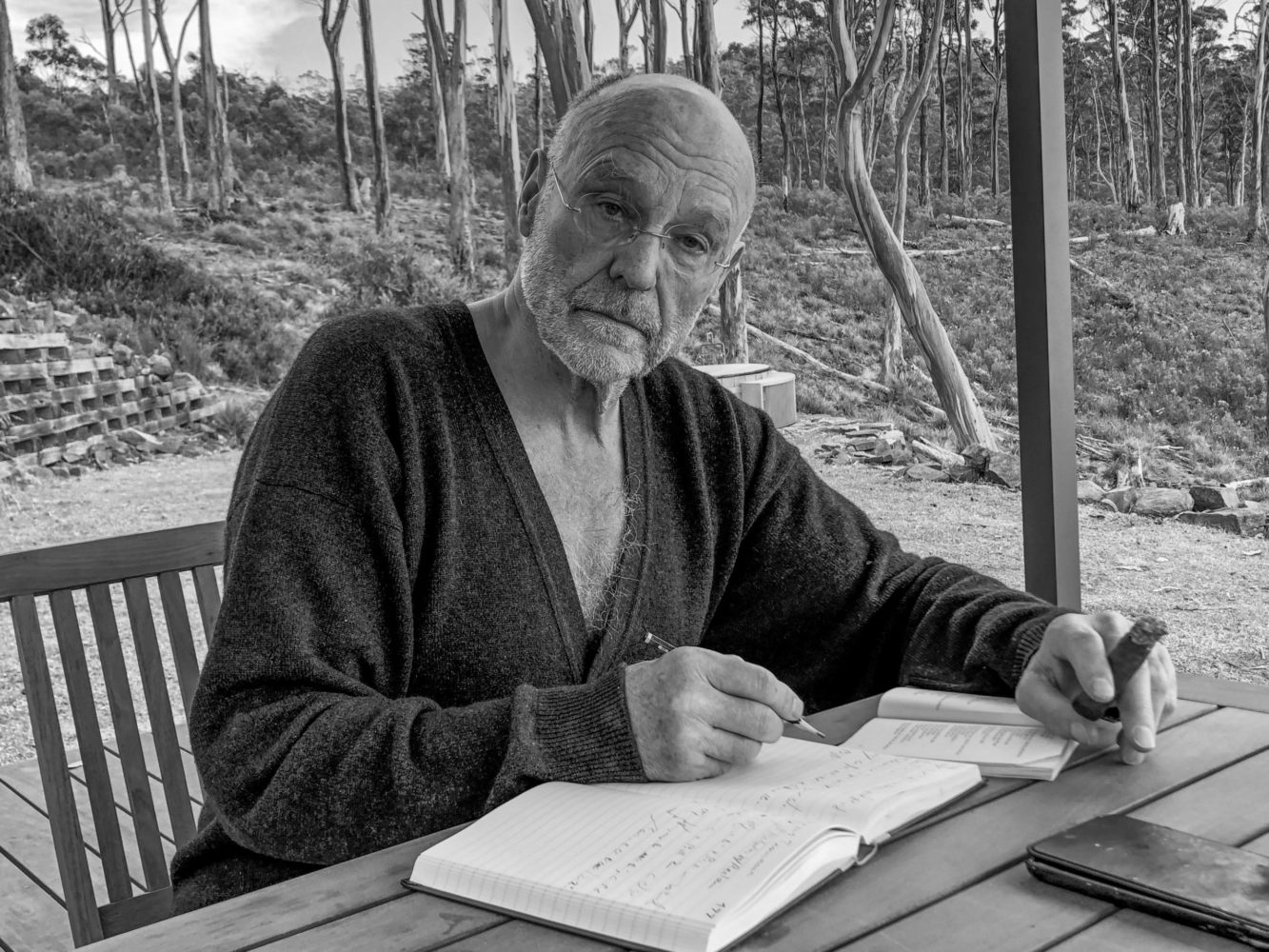
Portrait by Manuela Lucà-Dazio, 2019, © Anselm Kiefer, courtesy of Gagosian.
WHITEWALL: The objective of this commissioned installation was to respond to the existing art and structures within the Palazzo Ducale. How did you approach this process?
ANSELM KIEFER: I am very deeply immersed in the history of Venice and have read a lot about it. If you let the highs and lows, the victories and defeats pass you by, then you can recognize many of the structures from back then repeating themselves in today’s world politics.
WW: Though your works are completely new additions to the historic space, they almost feel as though they belong with the structure’s original ornamentation and artworks. What steps did you take to maintain respect for this space while fully immersing yourself in your response?
AK: I didn’t think long about what structures, etc., I would have to maintain. I simply moved in and something like a palimpsest emerged. And when my painting layer is removed again, I am sure that Tintoretto‘s paintings will also have changed.
WW: The work’s title, Questi scritti, quando verranno bruciati, daranno finalmente un po’ di luce (Andrea Emo), highlights a parallel between your art and the thoughts of the philosopher Andrea Emo. What similarities did you find between the two (your work and that of Emo), and how did these themes pertain to your installation—particularly the quote from which you found your title?
AK: I became acquainted with the writings of Andrea Emo about five years ago in the German edition of his philosophical fragments by Massimo Donà. In doing so, I discovered to my greatest surprise that his philosophy can be understood as a directive for the creation of my paintings, although my artistic career had begun 50 years earlier than my encounter with Andrea Emo’s philosophy.
I have to elaborate a little: after some ineffectual attempts in the sixties, I came to realize that there is no such thing as a masterpiece, that a painting is never finished, that it is a constant process with no ascertainable result. Even at the start of a “work”, I saw that it was already certain that the beginning would at the same time be the annulment of what had begun. The failure—that is, the nothingness—was therefore already there. There was no chronology for me, no before and after. The failure, the nothingness, was always already involved in the work on the artwork. Andrea Emo says: “being is not in place of nothingness, but being is the presence of nothingness itself.” He thus stands in contrast to Martin Heidegger, for example, for whom nothing is always thought in opposition to being.
This philosophy is contained in the title of the exhibition in the Palazzo Ducale. Andrea Emo’s saying also touches the world of Eastern philosophy: we are the little light, a quark in the infinite cosmos. He once quotes Lao-tzu: “Advantage is had from whatever is there, but usefulness rises from whatever is not”.
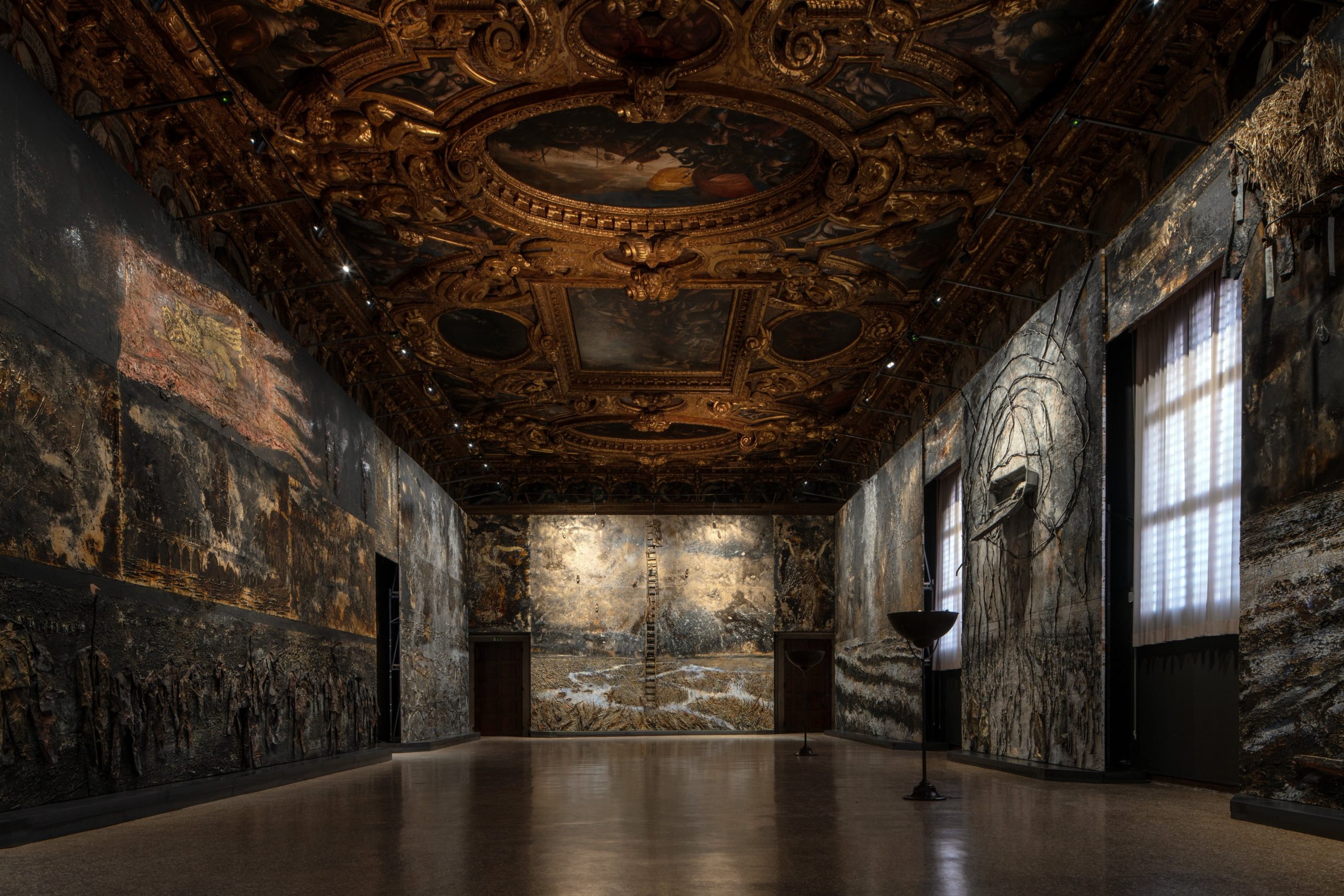
Anselm Kiefer, installation view at the Palazzo Ducale, photo by Andrea Avezzu, courtesy of the artist and Fondazione Musei Civici di Venezia.
WW: Gabriella Belli, Director of the Fondazione Musei Civici di Venezia, said of your installation, “The mission of this great project is to understand the need for public spaces to bear witness to our time, to construct an epiphany of our contemporary era, and to put on stage the present and its universal values.” What are these universal values?
AK: We are used to thinking of the world as a continuous evolution: from simple single-celled organisms to ever more complex systems, up to the human being. With the artist it is different: he climbs up as well as down the ladder of development. (See Picasso‘s Demoiselles d’Avignon with its recourse to the so-called “primitives”).
I go much further “back” at least to the Grotte l’Aven d’Orgnac near Barjac. These are parts of the “universal values.”
WW: What might viewers take away from this experience?
AK: Viewers should not only orient themselves to current fashions, but try to move in different times: we have our human time, then there is geological time and even more comprehensively: cosmic time. In one of my paintings, I refer to Alfred Wegener‘s theory of the constant shifting of the continents. There are large dark masses reaching to the horizon, which seem to be moving.
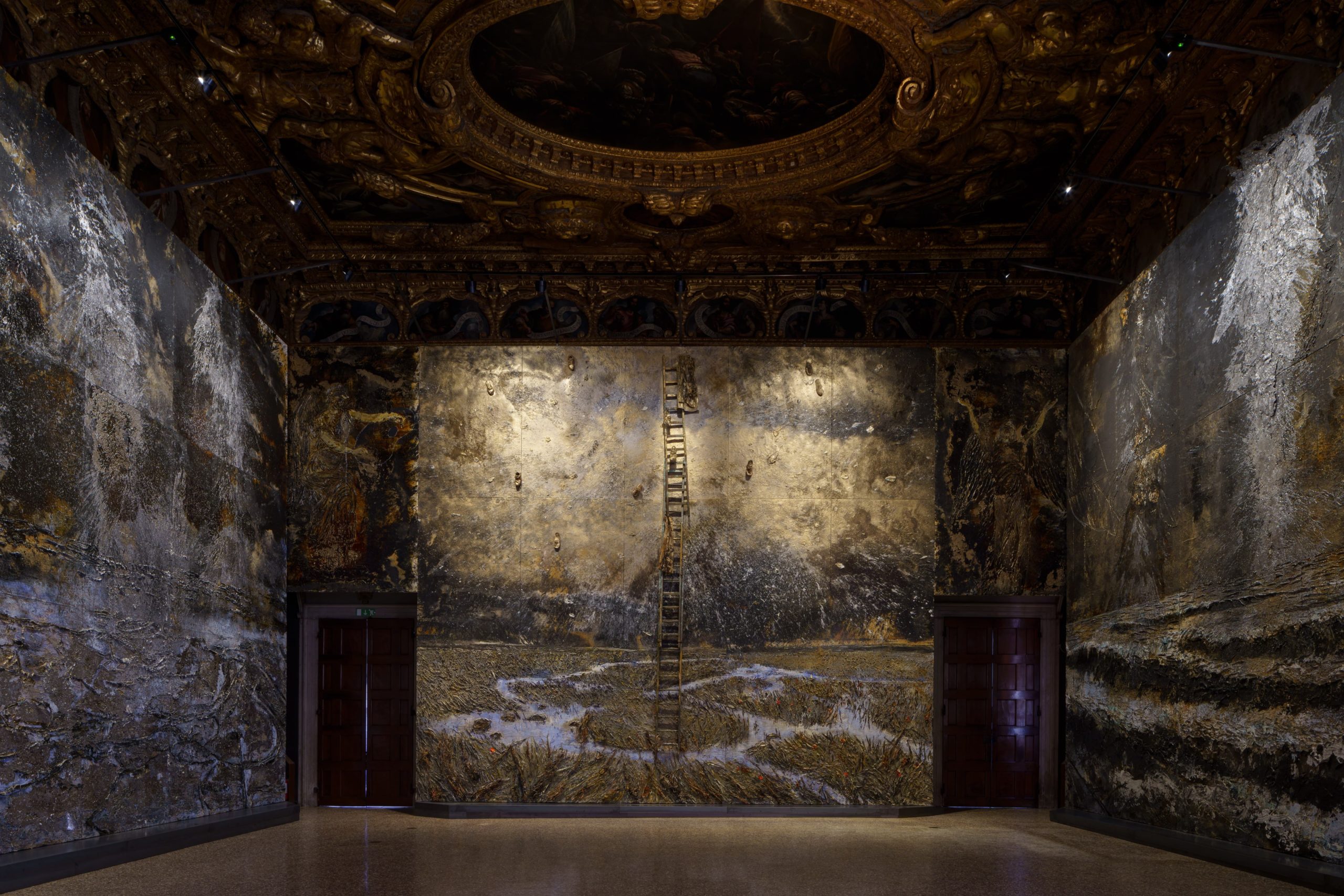
Anselm Kiefer, installation view at the Palazzo Ducale, photo by Andrea Avezzu, courtesy of the artist and Fondazione Musei Civici di Venezia.
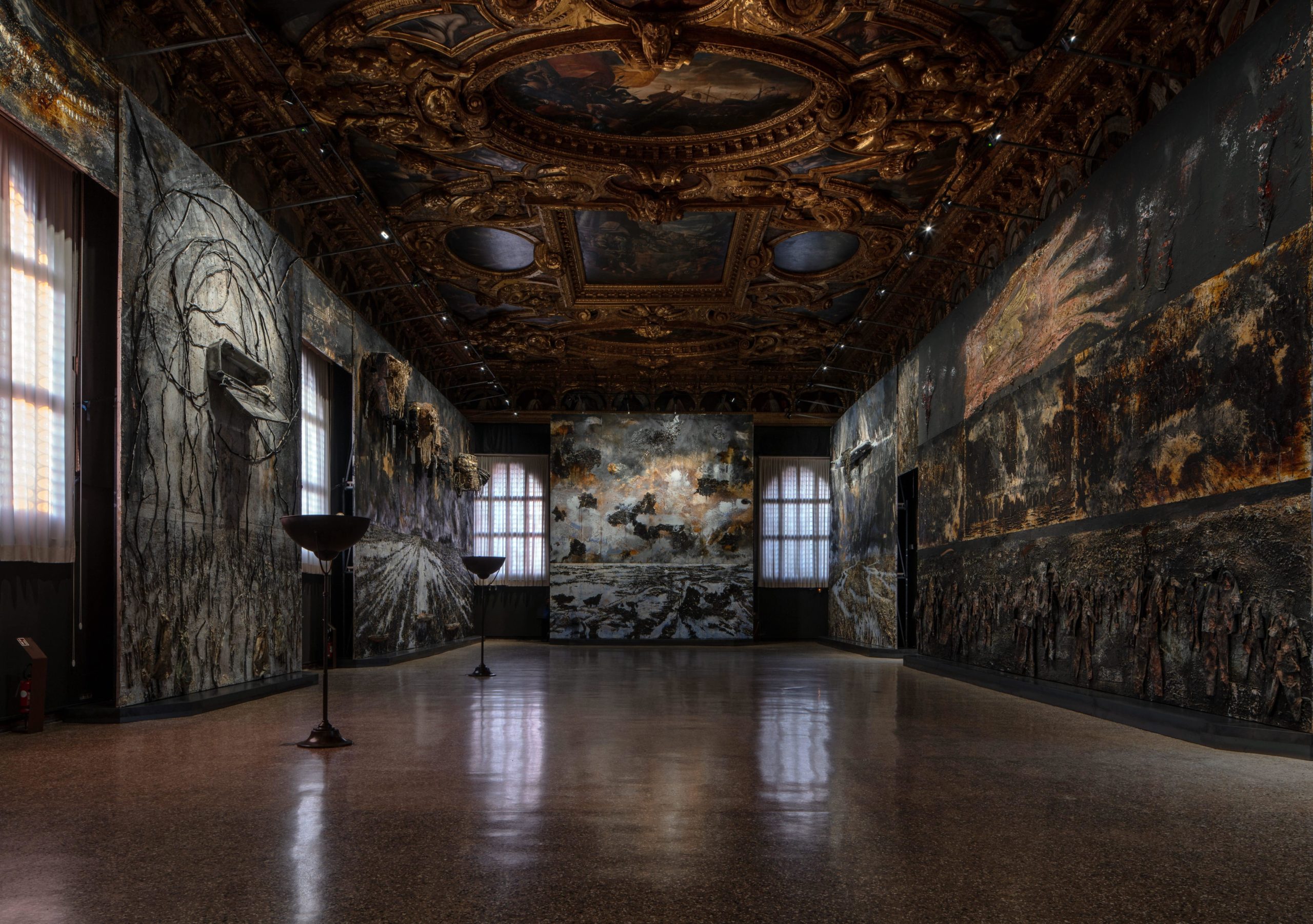
Anselm Kiefer, installation view at the Palazzo Ducale, photo by Andrea Avezzu, courtesy of the artist and Fondazione Musei Civici di Venezia.



